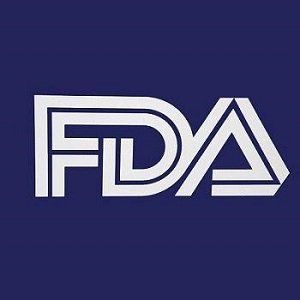Midostaurin Approved for AML, Systemic Mastocytosis
On April 28, 2017, the US Food and Drug Administration approved midostaurin (Rydapt) for treating newly diagnosed FLT3-mutated acute myeloid leukemia and three types of systemic mastocytosis.

On April 28, 2017, the US Food and Drug Administration (FDA) approved midostaurin (Rydapt, Novartis International AG) for treating newly diagnosed FLT3-mutated acute myeloid leukemia (AML) and three types of systemic mastocytosis (SM). The agent is approved as a treatment in combination with standard cytarabine and daunorubicin induction and cytarabine consolidation.
"The availability of midostaurin now helps to establish a new standard of care in this high-risk patient population," said Richard Stone, MD, who is Chief of Staff and Director of the Adult Leukemia program at Dana-Farber Cancer Institute in Boston.
This approval in newly diagnosed FLT3-mutated AML patients marks the first new treatment in more than 25 years in this patient population. The FDA also approved a companion diagnostic, the LeukoStrat CDx FLT3 Mutation Assay (Invivoscribe Technologies Inc.), for use with midostaurin to test patients with AML for the FLT3 mutation.
Approximately one-third of AML patients reportedly have a FLT3 gene mutation and this mutation can result in faster disease progression, higher relapse rates, and lower rates of survival than other forms of AML.
The approval was based on the phase III, randomized, double-blind, placebo-controlled RATIFY trial in 717 patients with previously untreated disease. Patients were randomized to either placebo or midostaurin 50 mg orally twice daily on days 8–21 of each cycle of induction and consolidation chemotherapy followed by continuous daily midostaurin for up to 12 cycles. The trial demonstrated a significant improvement in overall survival (OS), with a 23% reduction in the risk of death (hazard ratio, 0.77, P = .016).
The most common adverse reactions (occurring in at least 20% of patients) included febrile neutropenia, nausea, mucositis, vomiting, headache, petechiae, musculoskeletal pain, epistaxis, device-related infection, hyperglycemia, and upper respiratory tract infection. The most frequent serious adverse reaction was febrile neutropenia.
The FDA also approved midostaurin for the treatment of adults with aggressive systemic mastocytosis, which includes aggressive systemic mastocytosis (ASM), systemic mastocytosis with associated hematological neoplasm (SM-AHN), and mast cell leukemia. This is the first time a targeted agent has been approved for these rare cancers.
The approval was based on response rate and duration in a single-arm, open-label study of midostaurin 100 mg orally twice daily. The study showed that the rates of confirmed complete remission (CR) plus incomplete remission (ICR) were 38% for ASM and 16% for SM-AHN with 6 cycles of midostaurin. One patient (5%) with mast cell leukemia achieved a CR. The most common adverse reactions included nausea, vomiting, diarrhea, edema, musculoskeletal pain, abdominal pain, fatigue, upper respiratory tract infection, fever, headache, and dyspnea.
Bruno Strigini, who is CEO of Novartis Oncology, said in a press release this agent represents a remarkable advance as the first and only targeted therapy approved for patients who had limited options for many years.
Newsletter
Stay up to date on recent advances in the multidisciplinary approach to cancer.
Highlighting Insights From the Marginal Zone Lymphoma Workshop
Clinicians outline the significance of the MZL Workshop, where a gathering of international experts in the field discussed updates in the disease state.